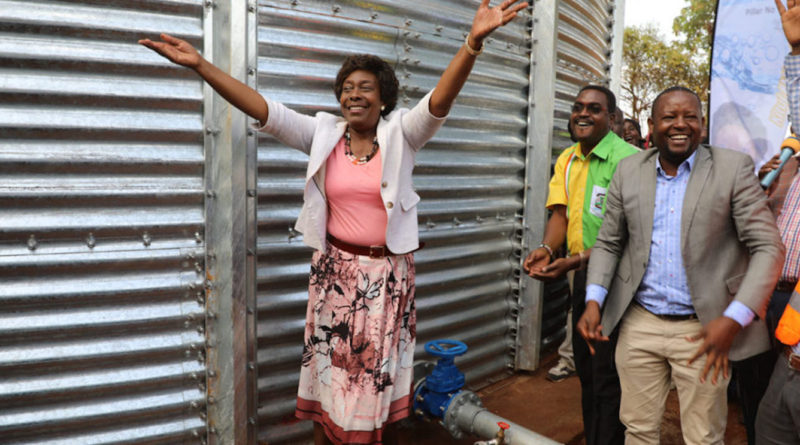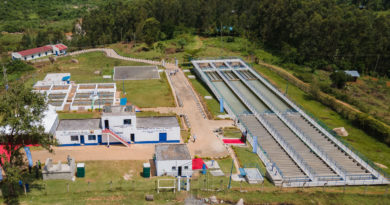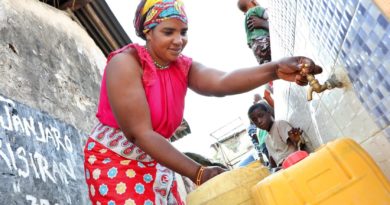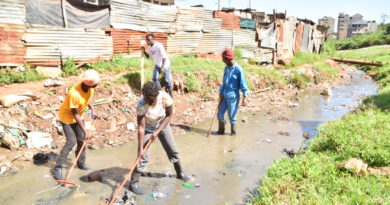Water Security in Kitui County
Governor Charity Ngilu’s development Agenda is structured upon five main pillars namely food and water, Health, Education and youth development, Women Empowerment and finally Wealth creation.
And as such, a robust structure for mass development was hatched in Kitui County, a structure whose fruits would see to it that “Musangi” the indigenous Kitui people benefited immensely or progressively.
With food and water listed as the first pillar in Governor Ngilus’ manifesto, a stock taking mission was embarked upon to ascertain as to the development process barely 2 years since Governor Charity Ngilus’ swearing in.
With 532 fully operationalized boreholes the County government of Kitui under the leadership of Governor Charity Ngilu embarked on a mission to quench the thirst of the people of Kitui once and for all.
Managed by local member committees, all the County sanctioned water projects were tasked to ensure that water was accessible and most importantly the return journey in search of this commodity reduced.
Important to note, is the fact that in the previous dispensation, “Musangi” had to brace 12 kilometers in search of water, a distance that has since been significantly reduced to an average of 8 kilometers round journey just 2 years since the Governor’s swearing in.
Moreover most of the high cost of operation were occasioned by the need to purchase fuel for the pumping of water, a plan to install solar sets was developed. A plan that has not only reduced the cost of operation but has seen the management committees of 251 boreholes able to reach their expenses and remain with enough money to empower their families.
Elsewhere, far from boreholes Kitui County residents have also benefitted from earth dams which are specifically modelled to mitigate the far reaching effects of the drought.
While a full quantification of the projects so far may not be possible, it’s evident of an improvement of the water conditions.
In the entire County and as such, only time will tell as to the full realization of the water agenda or for the people of Kitui as envisioned by governor charity Ngilu.
Kitui County has since time immemorial been identified among several other Counties across the Country facing severe water scarcity. However this narrative has since changed after the introduction of devolved governments.
For instance, just to give you an update on the status of water in the County before Governor Charity Ngilu assumed office, out of the 454 piped schemes mapped, only 254 (56%) were operational. At the time the main source of energy used for pumping was generators at 53% and solar energy at 23%. The leading operational expenditure items were identified as fuel at 42% with repairs and maintenance at 13%. The average walking distance to piped schemes was 6.9 kilometers.
The County Government of Kitui, under the leadership of Governor Charity Ngilu has since then put measures to curb the alarming water scarcity across the county, these being in line with her water Agenda.
The County Government started by purchasing 1600 plastic water tanks aimed at harvesting rain water, each with a capacity of 16000m3 which were distributed in health and learning institutions across the county. The County government has among other initiatives installed 2 bulk steel water tanks each with a capacity of 500,000litres at Kwa/ vonza and Mutomo markets mostly with the aim of reducing the trekking distance by area residents to water points.
Other new projects were the drilling of 14 new boreholes, 40 earth dams, 32 boreholes were equipped, pipeline extensions of 114 kilometers and the supply of borehole repair items .In the year 2017 a total of 121 boreholes were repaired and 103 boreholes were repaired in 2018. Recent operationalized boreholes are; Sangala in Kauwi ward, Kamumbu in Yatta /Kwa vonza ward, Kyalamoko in Nguni ward, Engamba and Ndia Mumo in Nguni ward, Kawala in Nuu ward and Kasiluni in Ngomeni ward.
The county government, in 2019/2020 FY is aiming at constructing 15 earth dams, equipping/ hybridization of 18 boreholes, drilling and equipping of 24 boreholes, construction of 15 sump wells, 17 pipelines extensions approximately 51 km and 8 bulk water storage tanks.




